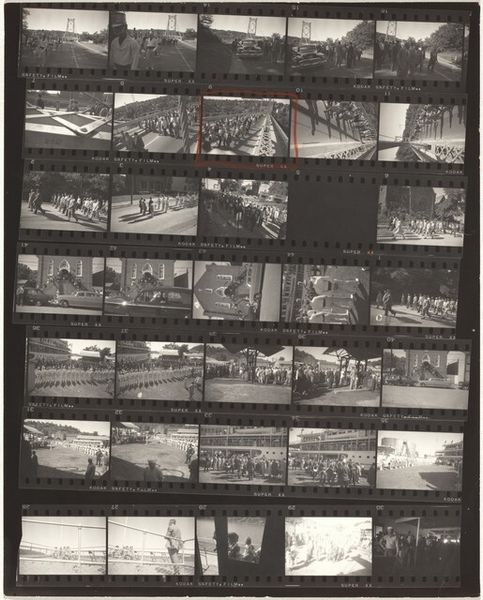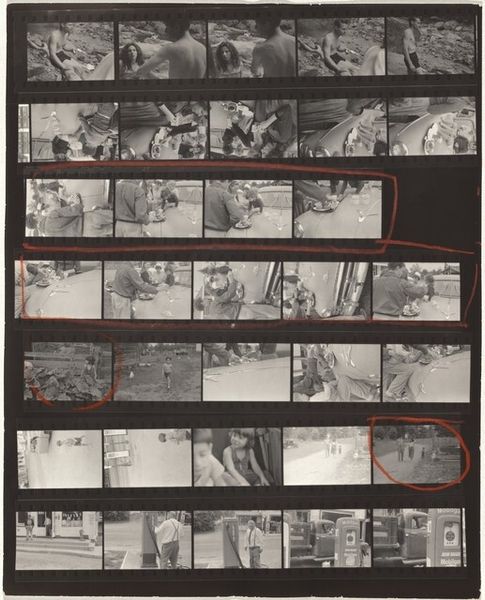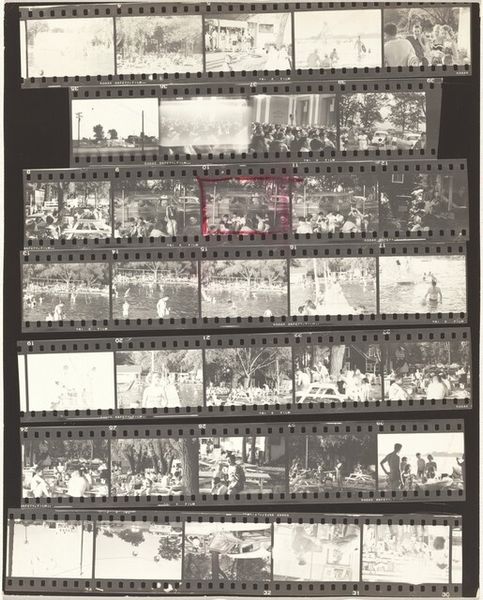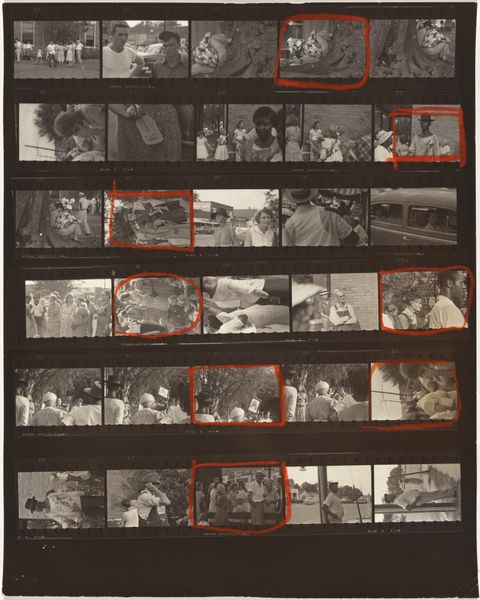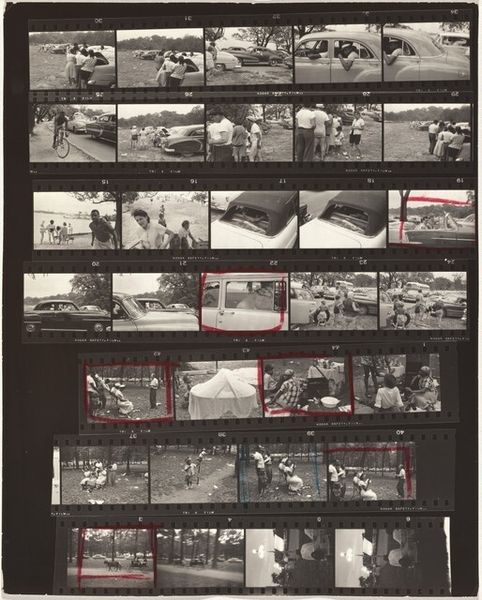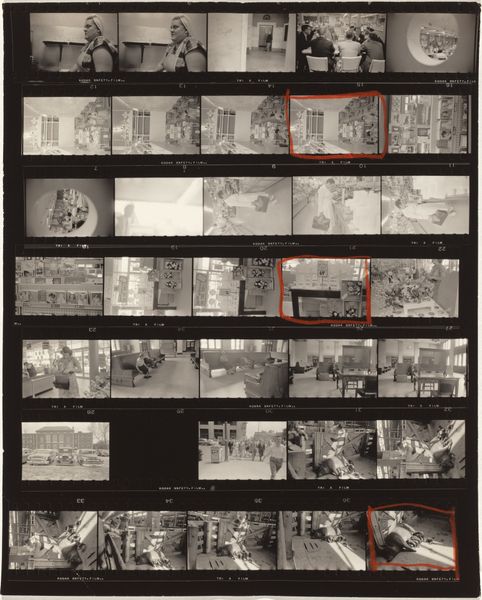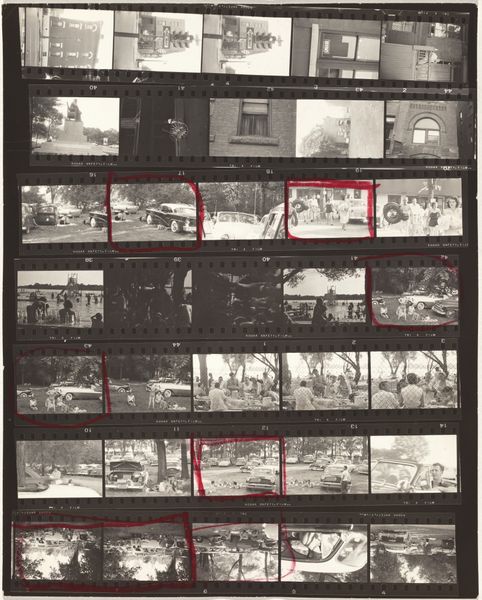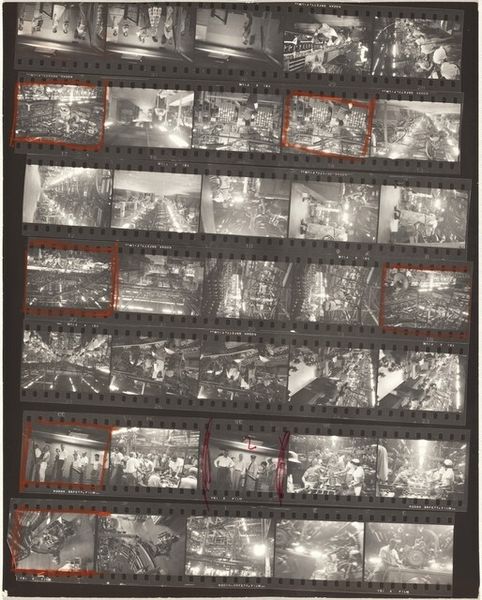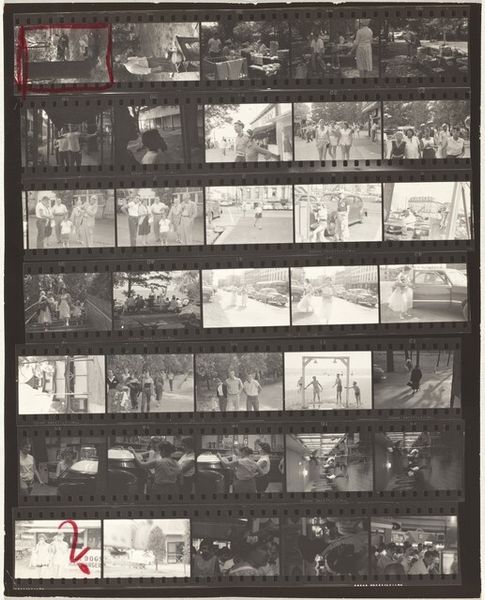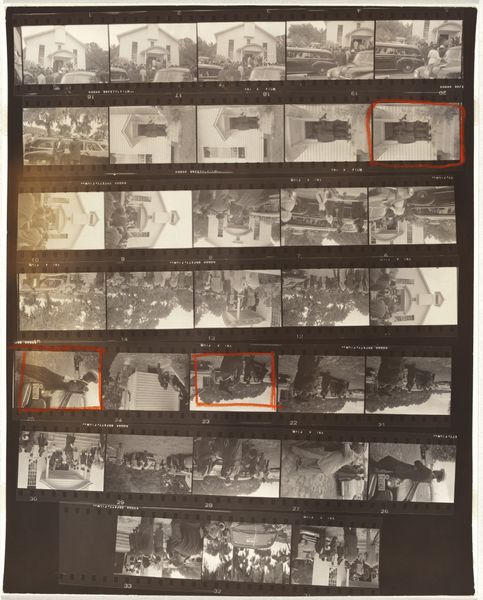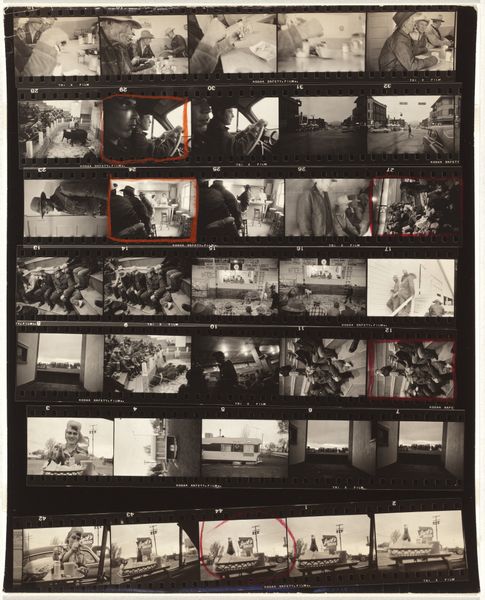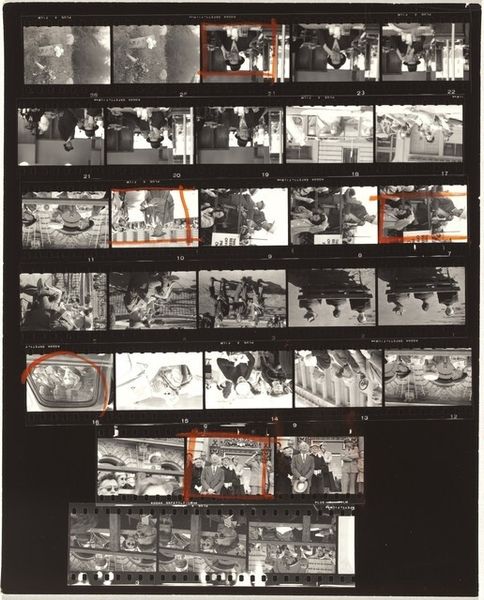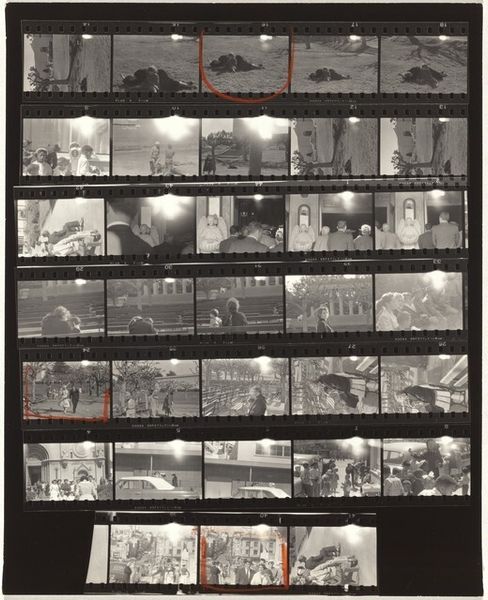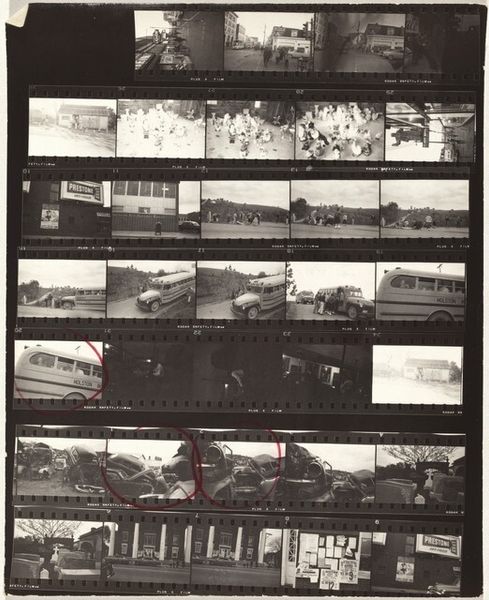
Dimensions: overall: 25.4 x 20.4 cm (10 x 8 1/16 in.)
Copyright: National Gallery of Art: CC0 1.0
Curator: Here we have Robert Frank's "Guggenheim 57/Americans 77 and 78--Detroit," a gelatin silver print from 1955. It's essentially a contact sheet showing multiple frames. What strikes you initially? Editor: There's a quiet energy, a slice-of-life kind of feel. Looking at the candid shots reminds me of flipping through old family photos—snapshots of regular moments infused with some mystery. I wonder what they were celebrating in those parks? Curator: That’s interesting because Frank wasn't necessarily celebrating. He was working on *The Americans*, a very critical look at post-war American society. This contact sheet shows his process; choosing what frames spoke the loudest. Consider the societal backdrop – a supposedly thriving 1950s America. But Frank, a Swiss immigrant, saw something different. Editor: Right, this isn't your feel-good, patriotic snapshot of Americana. The red marks all over are heavy like bold questions. I think he was trying to give America back its image and challenge the country, its identity—like he’s trying to develop a nation's truth alongside these pictures in his darkroom. Curator: Precisely. The "Americans" series was controversial because it didn't present an idealized version. Look at the frames he selected: casual gatherings, cars, and glimpses of people. Nothing overtly dramatic, but something almost mundane, yet unsettling at the same time. It makes you wonder, doesn’t it? Was Frank revealing the hidden complexities beneath the surface of this picture-perfect facade of mid-century America? Editor: Absolutely, he stripped down any sense of forced optimism and challenged people to find realness. Maybe by selecting such real snippets of time—those red marks have even more punch in the statement. There’s an art of extracting essence. Like finding poems between frames. It takes skill and insight. Curator: And courage too. Remember the historical context; his approach was completely new. But he chose that lens for his own reasons and vision. Now, looking at the contact sheet as a whole, it reminds us that every photograph is a choice. Editor: So well put! It's like Frank gives permission to seek truth through raw moments. This is not a glossy magazine cover; but a real memory box to be studied for some time to come.
Comments
No comments
Be the first to comment and join the conversation on the ultimate creative platform.
